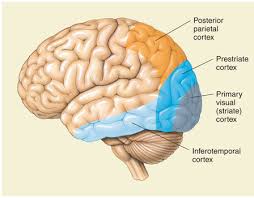Understanding electrical circuits in the brain
When we wake up, our brains shift from being unconscious to conscious. While we usually think of this transition as the prime example of the emergence of “consciousness,” consciousness is also defined as any perception of stimuli that initiates a response from our brain. For example, when you look at a painting, the steps your brain takes to register the image constitutes the conscious perception of the painting. Until now, how this process was not well understood, prompting Yale researchers to examine what happens during the few milliseconds of conscious perception.
Led by Hal Blumenfeld, a professor and clinician in the Yale Department of Neurology, researchers studied this phenomenon of conscious perception. “We wondered what happens in the split-second that you become consciously aware of something. How is this different from all the many things that you are not aware of?” said Blumenfeld, explaining the motivation for this project.
In the study, participants were given a conscious visual perception task, and their resulting electrical signal images from the cerebral cortex, the part of the brain responsible for consciousness, were obtained. These images allowed researchers to visualize how the human brain processes stimuli during consciousness. By studying the brain electrical signals during that split second, the researchers found that conscious events trigger a wave of signal processing that passes quickly through most of the brain, while at the same time some selectively turning off some brain circuits to control information flow.
The researchers proposed a new model for this type of brain processing. Their switch-and-wave model represents two steps in visual processing. The first step is a triggered “switch” that occurs when electrical signals enter the brain and are consciously perceived. After entering the primary visual cortex, the part of the cerebral cortex located at the back of the brain responsible for receiving and processing visual stimuli, the signals combine with other electrical signals from areas of the brain associated with higher brain functions such as action and thought. This starts the second “wave” step, where a cascade of processing steps through the neural networks occurs. Ultimately, this model aims to describe how the human brain receives and processes external stimuli to produce consciousness.
To test their model, the researchers implanted electrodes into participants’ brains to record electrical signals during various tasks. Participants compared identical stimuli, and the corresponding brain signals were then reported as “perceived” or “not perceived.” During any perception task, the brain’s electrical activity changes in specific frequency ranges. By measuring these changes in electrical frequency, the researchers directly observed changes in brain activity.
The investigation unveiled new discoveries about how brains process stimuli and perceive consciousness. Previously, an “ignition” model of conscious visual perception was hypothesized, consisting of widespread brain activity after a visual perception. The switch-and-wave model was proposed in order to account for new discoveries, including the observation that stimulus presentation can activate the visual cortex independently of conscious states, and that both activation and deactivation of several brain regions occurs only during “perceived” trials.
Previous ignition models did not focus on the importance of this switch network.. Furthermore, in the first “switch” step, the wave of brain activity that proceeds through the medial temporal cortex, a part of the brain associated with memory, had previously been thought to occur only in processing and memory encoding. The new finding highlights the complexity of the human brain, further shown by the fact that the step from stimuli detection to increased visual cortex and higher association cortex occurs within just 200 milliseconds.
The investigation revealed that only “perceived” trials initiated the switch-and-wave process of brain activity although both “perceived” and “not perceived” trials were subjected to the same visual events during the task. These results further demonstrate the need to understand how the brain works when exposed to environmental stimuli. Often the same event is interpreted differently by two people, prompting questions as to how exactly individual brains differ in conscious perception and how this affects memory recollection and other cognitive processes. While many questions in neuroscience remain unanswered, this new model begins to explain the mystery of consciousness.
“Consciousness is sometimes viewed as a topic that is too challenging to investigate, but I think the progress in consciousness research in the past few years leading up to our latest results is very exciting. I hope that others will be encouraged to enter the field of consciousness research so we can further deepen our understanding of how we think about, feel and experience the world,” said Blumenfeld.

